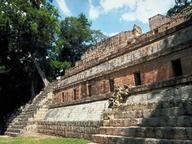Quiz Answer Key and Fun Facts
1. First in my list is Dr Eric Callen, who received a doctorate in botany whilst at the University of Edinburgh in Scotland. Butt of scatological jokes for his chosen archaeological field, he was a pioneer in coprolite research. What are coprolites?
2. When in the field, Aegean prehistorian and survey archaeologist John F Cherry's hands-on work has been mainly in regional surveys and landscape studies. He also has specialist interests in Alexander the Great and lithic analysis. Normally associated with the prehistoric era, what material does he study when doing a lithic analysis?
3. Frenchman Jean-François Champollion, polyglot and linguist, was responsible for deciphering the Rosetta Stone. What language did he 'crack'?
4. Clive Eric Cussler, an American author of adventure books, has a series in which the main characters work for the fictional organisation NUMA (or National Underwater and Marine Agency), a government body which carries out oceanic exploration and investigation. In real life he went on to found an organisation with the same name. What kind of archaeology does NUMA practice?
5. Fay-Cooper Cole, a former professor of anthropology at the University of Chicago, contributed to North American archaeology through a series of archaeological digs in Illinois during the mid-20th century. Although anthropology is a separate science, bioarchaeology (known in Europe as osteoarchaeology or paleo-archaeology) is a sub-discipline. In an archaeological dig, what is the focus of bioarchaeology?
6. Site excavation is an activity strongly associated with archaeology. The two basic types are: research and development-led. In development-led excavation, archaeologists are typically under time pressure to do their stuff so that a building project can go ahead. During the late 1940s and early 1950s, the archaeologist W F Grimes was involved in a programme to carry out such surveys in London. What was the reason for so many rescue archaeology-type digs at this time?
7. Swedish archaeologist Einnar Gjerstad was known for his work on artefacts boasting the following characteristics: they were common, broken easily, are durable and changed form frequently. Which artefact was this?
8. The archaeological concept of stratigraphy is based on artefacts being deposited like sedimentary layers, which helps to place artefacts in context and relative to each other. Pioneers in the use of this theory include Ernst Curtius. From which science was this concept borrowed?
9. During the 19th century there was a shift from antiquarianism, where artefacts had been treated more as artworks for collecting rather than as an aid to interpretation. One of those to take a broader view was Friedrich Gottlieb Welcker, a German classical philologist and archaeologist. He used his knowledge of Greek art and religion in the interpretation of literature. Which of these could be a definition of philology?
10. On many occasions amateurs can make significant contributions to important archaeological finds. One such person was Frank Calvert who spent decades carrying out field archaeology in the Troad and Thracian Chersonesus in Turkey. Which major site was he largely responsible for discovering?
Source: Author
suomy
This quiz was reviewed by FunTrivia editor
bloomsby before going online.
Any errors found in FunTrivia content are routinely corrected through our feedback system.

